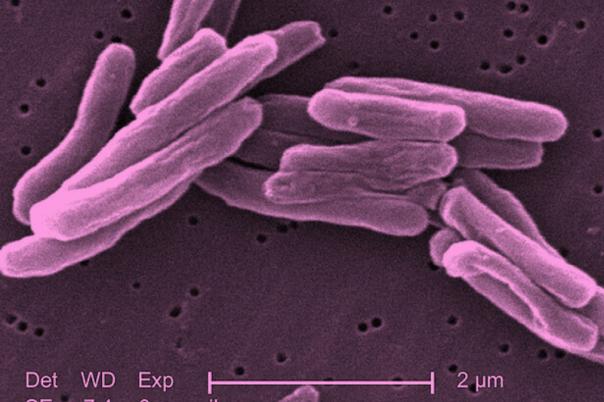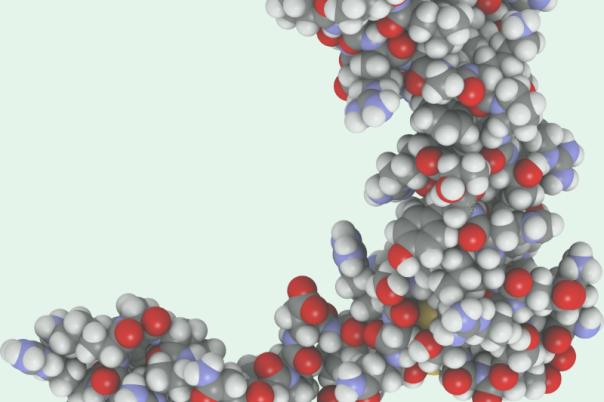Our September 2025 Thought Leadership webinar Harnessing Multi-Omics for Next-Generation Drug Discovery brings together experts from industry and academia to discuss the opportunities and challenges of applying multi-omic technologies in drug discovery and development. This one-hour webinar (available here to watch on-demand) combines an exclusive interview with Tom Lanz, Senior Director of Multi-Omics and Biomarkers at Pfizer, and an inspiring panel discussion featuring Wei Wang (Princeton University), Junmin Peng (St. Jude Children’s Research Hospital), and Sunhwa Kim (AbbVie). Across the discussion, the speakers highlight how genetics, transcriptomics, proteomics, metabolomics, and other omic approaches are being combined to reshape drug development, while also examining the barriers that must be addressed for the field to progress.
Lanz began by describing the remit of his group at Pfizer, which sits within the drug safety organisation and engages with programs ranging from early-stage discovery through phase three and beyond and, in some cases, approved products. Multi-omics and biomarker strategies are typically applied when there is a need for safety biomarkers or when omic technologies can provide insight into specific questions. Over the past five years, the most visible impact of multi-omics has been in target identification, supported by the expansion of genetic data and single-cell resources. Large-scale projects such as GTEx and the Human Cell Atlas have advanced the resolution with which target expression can be understood, improving both pharmacological insight and safety assessment. Functional genomics, including increasingly sophisticated CRISPR screens, has also become integral to workflows for validating new targets.
While Lanz emphasises that multi-omics has potential value throughout drug development, from in vitro and in vivo modelling to clinical trials, he notes that the most immediate benefits are being realised in target identification and validation. Integration of genetics with transcriptomics or proteomics has provided especially valuable insights, while epigenetics paired with transcriptomics is increasingly important for studying downstream effects of epigenetic modifications. In single-cell applications, the combination of receptor sequencing with RNA profiling and protein measurements is generating powerful new datasets.
A significant barrier, however, remains cost. Bulk RNA sequencing has become inexpensive and accessible, but single-cell and spatial approaches remain 10 to 100 times more costly, limiting their application to foundational studies or questions requiring that level of resolution. Lanz illustrates the impact of omics through case studies, including RNA sequencing to clarify receptor subtype specificity in a schizophrenia program and targeted DNA sequencing to assess oncogenic risk in AAV therapies. These approaches accelerated decision-making and in some cases reduced the need for lengthy studies. Looking forward, he suggested that breakthroughs in accessibility and scalability - similar to those that transformed sequencing - could elevate other omic fields, particularly proteomics. He also stresses the need for improved data-sharing infrastructures to accommodate increasingly complex datasets and encouraged organisations to embed omics expertise within teams rather than relying solely on service providers.
A lively panel discussion explores the key opportunities and challenges of multi omics in transforming drug development. Kim argues that the most important factor is not selecting the ‘right’ combination of omics but aligning integration with the research question and stage of development. She emphasises the importance of coherence across different omic layers in order to generate mechanistic connections that support translation from discovery to clinic. Wang adds that transcriptomics often occupies a central position because of its role in connecting genomic variation to protein expression, while epigenomics and proteomics further refine this picture. He also highlights the growing utility of organoids as physiologically relevant systems for multi-omic interrogation.
Peng placed emphasis on networks rather than individual changes, noting that drivers of disease may be missed if analyses focus only on large fold-changes. Combining omics with perturbational approaches, such as CRISPR screens, provides a means of identifying causal pathways. He observed that in neurodegenerative diseases and other complex conditions, the drivers may lie outside DNA variation, requiring multi-omic integration to capture the interplay of environmental, metabolic, and proteomic factors.
Translating omic signals into actionable biomarkers emerged as a central theme. Lanz explains that pharmacodynamic biomarkers are often required to demonstrate target engagement in early trials, but robust markers in preclinical models may not be accessible in humans. Omics provides a way to identify suitable biomarkers that can be carried into the clinic. Kim stresses the importance of monitoring entire pathways rather than focusing solely on individual targets, while Peng highlights the value of time-course studies and perturbation experiments to identify early drivers. Wang suggests that model choice, such as the use of organoids, can also determine the translational value of identified signals.
The panel explores barriers to reverse translation, where clinical and real-world data inform preclinical research. Kim describes this as a powerful approach for understanding non-responders, assessing why drugs fail, and identifying disease segments with unmet needs. However, challenges include tissue preservation methods, integration of heterogeneous data types, and the need to pose clear questions at the outset. Lanz adds that species differences remain a complexity, as platforms optimised for humans may not apply equally to preclinical models. Wang and Peng highlight the importance of early planning, statistical power, and thoughtful cohort design to maximize the value of omics data.
The panel also address disease microenvironments, including tumours and neurodegenerative tissues. Wang describes the tumour microenvironment as a complex ecosystem of tumour cells, stromal cells, vasculature, and immune infiltrates, where multi-omics functions as a molecular microscope capable of dissecting heterogeneity at single-cell and spatial levels. Peng emphasises that in neurodegeneration, focusing on affected subregions or single cells can yield more informative signals than bulk analysis, and that understanding cell-to-cell communication is essential.
Throughout this webinar, the panel agree that multi-omics is already shaping drug discovery and development in profound ways, with target identification and biomarker development standing out as near-term beneficiaries. At the same time, the field faces clear challenges in cost, data integration, and translational relevance. These discussions highlight that the future success of multi-omics will depend on careful planning, alignment of questions with technologies, and continued collaboration across the scientific ecosystem.







